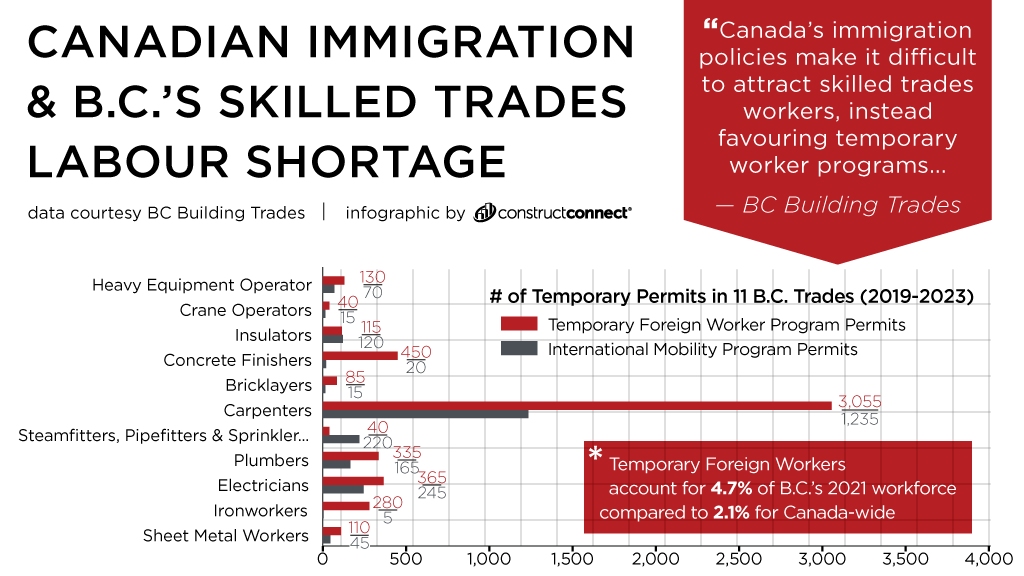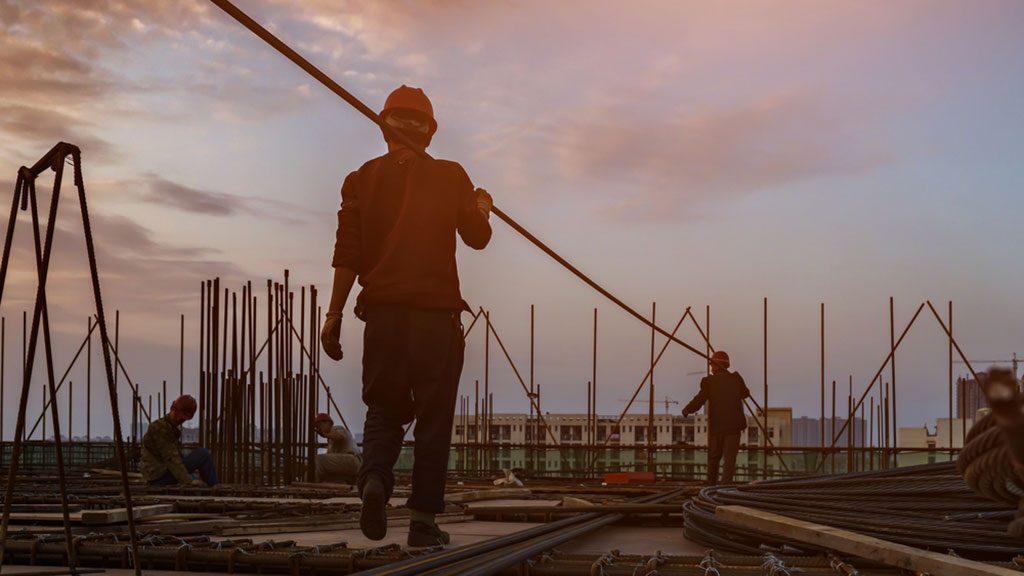A new report from the BC Building Trades is casting doubt on current immigration practices as a solution to the ongoing labour shortage.
HELP WANTED 2024: How Canada’s immigration system has failed to address the construction labour shortage in B.C. was released on June 25 and calls for a rethink on the use of temporary foreign workers in British Columbia to address the labour shortage.
“What we wanted to do is look at what the labour shortage is going to be over the next 20 years, how many tradespeople do we need, where are they going to come from, both domestically and internationally, and then look at those streams. If we are drawing folks from outside Canada, how are they coming in?” BC Building Trades executive director Brynn Bourke said.
The report states B.C. will need 52,000 construction workers over the next decade with 30 per cent of those individuals coming from outside Canada, she said.
“There are two key ways through which people our enter our country, one being permanent immigration streams or economic class streams, and the other is through temporary streams like the Temporary Foreign Worker (TFW) program,” Bourke said.
The problem, she said, is that at present very few construction workers are entering through permanent streams and many more workers enter through the TFW stream.
“There are four economic classes that apply to construction workers, the federal skilled worker program, the Canadian experience class, the provincial nominee program administered by B.C and they even created a federal skilled trades program,” she said. “Across all of those streams, only about 7,000 workers have gained entry in the last five years.
“The program that was designed to bring in construction workers through permanent immigration pathways, the federal skilled trades program, brought in less than 50 construction workers to Canada on average,” Bourke said.
“At the same time we’re bringing in more than 7,100 temporary foreign workers to our country. It’s a much more precarious pathway that is actually not going to solve our labour shortage in the short or long-term.”

Bourke also pointed to out-of-date rules as disadvantageous to potential immigrants with skilled trades experience.
“Our immigration system is fairly old and historically has been geared towards folks with a university degree and undervalues trade certification and apprenticeship. With the way the point system is structured around education level and language proficiency it’s very challenging for construction workers to get enough points to qualify to enter the country through a permanent immigration stream,” she said.
While those problems are reflected across the country, she added, in B.C. a disproportionate percentage of workers enter construction through the TFW program.
“When we look at the top 11 trades in B.C., we see nine per cent of concrete finishers are temporary foreign workers, six per cent of insulators, nearly six per cent of carpenters, two per cent of sheet metal and ironworkers. That has a real impact on changing the local labour market,” she said.
Bourke said this leads to firms paying market wages for labour in B.C. bidding against those bringing in temporary foreign workers paying lower wages, leading to a competitive advantage.
“We have construction companies that have actually made this part of their business model,” she stated.
“We’re doing this more and more as if some aspects of construction are addicted to temporary foreign workers. We’re bringing in more and more TFWs to perform construction work and yet the skilled trade shortage isn’t getting better, it’s getting worse.
“What we need is for companies in B.C. to invest in apprenticeships here and if we need to bring in people from outside Canada to help join the workforce, they should come through permanent immigration pathways,” she said. “(They should) have a path to citizenship and should also be mentored and join our apprenticeship system. They should also become Red Seal tradespeople who are highly skilled and qualified and stay here.
“That’s the only way we’ll dig ourselves out of this skilled trades shortage in the long-term and make sure we have the workforce we know we need to build the housing and infrastructure British Columbians are depending on,” Bourke said.
The report provides six recommendations for various levels of government and industry.
They are as follows:
- The federal government conduct an independent audit to investigate problems, abuse and mismanagement of the International Mobility Program and the Temporary Foreign Worker Program.
- The federal government update temporary worker program requirements and revise the definition and methodology for determining the prevailing wage (tied to the Investment Tax Credit); formalize construction unions’ role in labour supply verification and require a training plan and history of apprenticeship before employers are issued LMIAs.
- Work with Canada’s Building Trades Unions and contractors on a special Group of Employer initiative to support the construction of infrastructure projects of strategic importance to the national economy.
- Facilitate the entry of more permanent immigrants into the Building Trades through the Express Entry System in order to contend with labour force pressures.
- Employers should not be allowed to apply for LMIAs without a strong history of participating in the apprenticeship system and an up-to-date training plan.
- The B.C. government work in tandem with the BC Building Trades to better target workers as part of PNP trades worker draws and ensure these workers have a path to a well-paying career and union membership.



Check the facts the FTW program requires employers to pay the same rate as they would a Canadian. Plus the added cost of LMIA and work permits some cases flights and accommodation assistance when needed
It is not less expense it is in most cases a higher cost. The main advantage is they actually come to work and want to work.